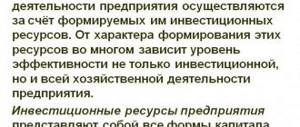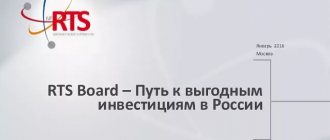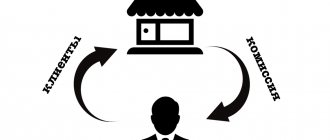- 7.1 Examples of blockchain projects
In connection with the active implementation of virtual cryptocurrencies, observed in recent months, many transaction systems, auxiliary platforms, etc. are appearing. Quite often there are references to the transaction database on the Internet, but not all users understand what they are talking about. In this material we will look at the concept of blockchain technology: what is it in simple words, and how does it work?
How does blockchain work?
- The first block contains the database in encrypted form.
- One of the users adds a transaction (new information), it is sent to the mempool, where all submitted transactions await confirmation.
- Participants confirm the action. The completed transaction is recorded in a block, each node in the chain receives the corresponding information. A transaction includes not only financial transactions, but also actions: sending documents (digital information), registering property rights.
- The second and subsequent blocks include materials from the first block and new additions. That is, each new block in the chain is linked to the previous existing set of records with a cryptographic signature. The signature is based on complex mathematical algorithms.
- Newly created blocks are added strictly to the end of the chain. The unbroken chain regularly acquires new content.
A cryptographic signature accompanies every, even minimal, change in the system.
Each computer is a node or node that stores current information about the blockchain. As soon as a new block appears in the chain, the computer updates the data in real time. Information about the chain is synchronized with other node computers without the participation of third-party services.
Blockchain technology was invented to keep data completely secure. There may be thousands of nodes in a blockchain system, and no hacker can hack all of them.
The method was developed over several years, but all the useful information was summarized by a programmer under the pseudonym Satoshi Nakamoto in 2008. At first, the data storage technique was created for the financial industry:
- Each participant in the system is anonymous;
- Payments are made from the sender to the recipient, there are no intermediaries;
- Each participant monitors the movement of the operation;
- The risk of fraud is eliminated due to the encryption of blocks and the transfer of the cryptographic key to a new block of information; it is impossible to make changes to them.
Thanks to the use of blockchain technology, it is possible to ensure adequate operation of private companies and government agencies online.
Basic Concepts
The first concept I would like to introduce to you is the concept of transaction
.
As Alexander Garkusha, a great blockchain specialist, says, a transaction is a “cry” that a certain address wants to transfer to another address, for example, a certain amount of bitcoins. The address itself in the blockchain is called a public key
. It always exists together with the private key, and together they make up the so-called wallet. The system checks the validity, and after this the transaction is considered approved.
The next concept is block
. This is, in fact, a record of a transaction in a certain format, which, through cryptography, turns into a set of some characters.
Miners of the 21st century, aka miners
. Why do these people exist? Everything is quite trivial - money. You and I have a block. It contains compressed information that has already gone through a cryptographic process and turned into a certain set of characters. Next, the miner must find the key to close this block. For the correct selection of the key, he receives money, now this amount is 12.5 bitcoins, which is approximately 15 thousand dollars.
To close a block, the miner selects the key
. The key of the first transaction is taken into account in the key of the second transaction. The third key includes the second key, which in turn includes the first key. Thus, a chain of blocks is obtained. And from this follows one of the main properties of the blockchain - the impossibility of replacing data in the past.
Blockchain
is a database in which records about a certain asset and transactions with this asset are stored; records are entered into blocks linked cryptographically.
Assets are divided into two types: coins
and
tokens
. Coins are coins, tokens are tokens. Coins are assets that have some solvency, or load, inherent in money itself. Tokens are a certificate of an asset (including physical ones). For example, there may be a record in the blockchain that Mr. Ivanov, or hash so-and-so, owns a house. That is, a token can be a record confirming ownership of a specific house.
Now most assets are coins. But sooner or later we will come to the point where it will not be coins that will dominate, but assets that confirm rights.
Consensus
– this is a key concept of the operation of the system itself. It is all built on consistency in the community, on agreement on some key points.
Smart contract
is the key opportunity that blockchain gives us. This is software code that allows you to automatically perform certain functions when specific conditions occur. For example, we wrote down a condition: if it is sunny outside, we will pay TSU two rubles. Then the program automatically connects to my account and the street sensor that determines the weather. It's sunny outside - two rubles are leaving my account for the benefit of TSU.
The smart contract approach can be used within the framework of an automatic law, or smart law. For example, if a hash transfers two bitcoins to another for the supply of some goods, then the second must pay a 20% tax on the profit. What prevents us from including one more line in this transaction, in this smart contract: of the listed hundred rubles, 20 go to the budget, 80 to the seller? And the system itself will distribute the money.
Now smart contracts are practically not recognized from a legal point of view. But there is an exchange of assets that can be quite significant. This needs to be reflected legally somehow.
ICO (Initial Coin Offering)
. This is the initial placement of coins or tokens. It's almost the same as an IPO. But in an IPO, you are selling a stake in your company. When an ICO is announced, there is no talk about it.
ICO should most likely be classified as crowdfunding. But not really. In crowdfunding, you sell your product, which you will release later when they give you money for it. In Russian this is called pre-sale. In an ICO, investors will not receive a product, but a coin or token.
The scheme is as follows. For example, I am now creating a social network on the blockchain. I say that I will have a billion users and they will all like it. And each like will cost one coin. That's why I make a limited number of them. There will be many users, few coins, and coins will be expensive. I suggest buying them now with a 50% discount, then I’ll make a social network and you can pay for likes.
In 2021, we were able to collect information about 250 ICOs in the entire history of the blockchain, but in April 2017 alone, 29 of them are planned.
Bitcoin
– is currently the main cryptocurrency. Bitcoin is a separate blockchain with the largest number of users. Previously, a miner received 50 bitcoins for closing a block. Every 210 thousand blocks, the miners’ reward is cut exactly in half. However, there is another source of income for miners - transaction fees. That is, the entire Bitcoin system is built on the fact that as the number of blocks increases, the miner’s reward for closing a block tends to zero, but as transactions in the block increase, his earnings in the form of transaction fees increase. The total emission size of this cryptocurrency is limited by the system itself. Bitcoins cannot be issued more than 21 million.
Currently, the miner's reward is 12.5 bitcoins. The Bitcoin exchange rate as of May 1, 2017 is about $1,500. For a closed block, a miner earns almost 19 thousand dollars. And there is a lot of competition in this area. I would say huge.
Ether
- the second most important system. The same thing happens with this cryptocurrency: block closure, mining. But a little differently.
Miners receive five ethers for one block (as of 05/01/2017 - $85 per ether) - more than $400, roughly speaking. Less than Bitcoin. But there is no limit on the size of simulated ethers. The ether is endless.
This cryptocurrency was first sold as coins in an ICO, and then 2,000 ethers were worth one bitcoin. If we convert at that rate, one ether cost 13 cents. Now its cost is $85, that is, since 2014 it has risen in price several times.
It would seem that if there are no restrictions on the number of ethers, sooner or later they should depreciate. But this does not happen, because Ether contains internal demand for the coin itself - it is needed to implement more and more new projects on the blockchain.
Who has the right to close blocks?
Miners receive a reward for closing blocks, this is called proof of work.
In 2017-2018 ether will switch to proof of stake - when blocks will be closed not by miners, but by people who have the largest amount of ether on their balance sheet.
History of blockchain technology
A little about the history of the creation and evolution of Blockchain technology.
The emergence of blockchain is associated with the name of Satoshi Nakamoto, the creator of the first cryptocurrency Bitcoin.
The technology was proposed in 2008. It took about 10 months for technical support and implementation, and in 2009 it was used for the first time in the form in which it exists now.
For the first time, blockchain began to be used as the basis of the first cryptocurrency - Bitcoin, where it played the role of a distributed registry for all operations with digital coins.
Thanks to blockchain, Bitcoin has become the first virtual currency that solves the problem of double spending without the use of an authority or central server.
Blockchain is a single secure register of information and data, which is presented in the form of electronic files, so one block can be copied and spent several times.
Principle of operation
In simple terms, the Blockhain concept was originally created for the transfer of value. At the same time, this technology is used in many areas of human life.
How does blockchain work and what is the transfer of digital values?
Let's assume that one user publishes certain information on the Internet, and others access it. And here the location of the people who are trying to get acquainted with the data is completely unimportant. The most important thing is that the recipients have a cryptographic key.
It turns out that Blockchain works like this: the transfer of a private secret key carries with it the transfer of all rights to values that are stored in a special blockchain. Everything is extremely simple!
Undoubtedly, it was not without reason that we mentioned cryptocurrency markets at the beginning of this article.
Of course, this is the most obvious example of blockchain in modern times. Transferring digital coins also involves the use of keys to access monetary assets.
Thus, Blockchain technology plays the role of an intermediary during the transfer of cryptocurrencies, which was previously performed by all world banks. In addition, it is the responsibility of the blockchain to establish trust between parties and confirm the authenticity of their identities.
Can attackers use private keys and steal private information?
Of course , in practice, theft of keys by attackers is possible. However, based on how this technology works, potential cyber attacks are reduced to zero.
The operating principle of blockchain helps it perform the main functionality of global banks. Its work is based on careful verification of identities to avoid fraud. This means that financial transactions are seriously protected by the network.
Advantages and disadvantages of using blockchain technology
Versatility and application in different areas of life are the advantages of blockchain technology.
The practical benefits of blockchain are:
- reducing transaction costs;
- reducing the time of transactions to several hours;
- getting rid of unnecessary expense items.
Advantages
- Blockchain as a distributed database. Blockchain exists as long as there is at least one computer in the world connected to the blockchain network, since all data is stored on the computers of all network users, and not in one place.
- Blockchain is about openness and security of information. Blockchain can provide a unique symbiosis of openness and security of user data. Reliability is achieved through advanced encryption methods.
- Blockchain as a secure storage. Any information that can be recorded on a piece of paper can be recorded in the blockchain. At the same time, intermediaries are not needed to carry out transactions: the database is managed in an autonomous, decentralized mode, which ensures transparency of the blockchain.
- Blockchain is about data reliability. Data in the blockchain network cannot be replaced or falsified: it is confirmed by many computers in the world.
- Blockchain means complete equality of rights for users. A copy of all blockchain blocks is stored on hundreds of thousands of computers around the world, forming a single network. All network participants have full equality and can equally fulfill their duties and violate them.
- Blockchain is anonymous transactions. The technology is designed so that the user can maintain absolute anonymity with full access to information.
Disadvantages
- Scalability. Blockchain cannot support many transactions in a short time like other more popular systems, and this is one of the main problems of the technology. MasterCard and Visa process about 45 thousand transactions per second; in the blockchain network these figures are thousands of times lower. At the same time, the weight of the database stored on users’ computers is growing daily.
- Load on electrical networks. The complex calculations of a blockchain network cause computers to consume a lot of energy.
- Insufficient prevalence. Blockchain technology has not yet been implemented globally, so it works very slowly in some projects.
- Probability of “attack 51%”. If a group of users manages to concentrate 51% of the computing power in their hands, they can begin to use the network to their advantage and confirm only transactions that are profitable for themselves. Therefore, it is not correct to talk about the complete invulnerability of the network, since risks are still present.
What projects have already been implemented?
1.
Australian financial conglomerate Commonwealth Bank of Australia (CBA), cotton retailer Brighann Cotton Marketing Australia and US bank Wells Fargo participated in a
deal in 2014 to supply cotton
from the United States to China, using trade and banking transactions within the blockchain system . 88 packages of goods were shipped for a total amount of 35 thousand dollars.
2. Brooklyn Microgrid.
Project from New York. Five houses have solar panels that produce electricity. The other five houses buy this energy. The blockchain system includes software that allows all transactions to be recorded. The smart contract performs automatic calculations. House owners have one task: to deposit money into the account or withdraw it.
3. Bankymoon.
African countries allow migrants in Europe to transfer money for electricity for their parents or children. In bitcoins. Power companies accept these payments. Also, in bitcoins, anyone can transfer money to provide electricity to one of the African schools.
4. LO3 – thermal energy recovery control system.
Miners, when making calculations, use a huge number of specially equipped servers for this. These computers produce enormous amounts of thermal energy. With LO3, the thermal energy generated by the servers is converted into electricity that powers them. It is clear that due to efficiency it is necessary to consume external energy, but savings occur.
Types of blockchains - private and public
Since different types of services and applications can be built on this technology, there are private and public blockchains.
Private blockchain
Such blockchains are considered exclusive and are created for the development of private business. They are closed and centralized, maintained and controlled by their authors and subordinated to corporate goals. To become a member of a private Blockchain, certain conditions must be met, and only certified users can mine new blocks.
Public blockchain
Anyone can join public blockchain systems and become a miner, since they are administered by the community itself.
Possibilities of blockchain technology
Despite the general hype around blockchain technology, it is important to understand that this is a database that has special properties.
Blockchain is a method of collecting, storing and processing data in decentralized peer-to-peer networks, which offers high security and reliability of the information recorded in it.
The concept of blockchain was proposed and tested back in 1991, but this technology became widely known after its use in the payment network of the first cryptocurrency Bitcoin. This is a decentralized payment network in which there is no intermediary or regulatory authority, and all users have equal rights.
The next round of blockchain development was smart contracts - these are software algorithms for concluding and executing self-executing contracts. With their advent, blockchain learned not only to store data, but also to apply it. For the first time, the full concept of smart contracts was presented in the Ethereum cryptocurrency, which was developed by a young programmer Vitalik Buterin.
Practical application of blockchain technology
In 2009, the blockchain was created as the basis and main tool in the system of the first cryptocurrency, Bitcoin. Over the past 12 years, the merits of this technology have been appreciated by the creators of other cryptocurrencies, ordinary network users, financial experts, owners of large banks and corporations, and even governments.
Therefore, the scope of blockchain is no longer limited to cryptocurrency systems.
The features and algorithm of Blockchain make it possible to use this technology when performing any operations related to the transfer of financial or other values between individuals and legal entities. This tool is designed to level out the element of mistrust between the payer and the recipient who are unfamiliar with each other and give them the opportunity to make a risk-free transaction.
The most promising area of using blockchain technology for business is trade, followed by medicine, logistics and document management in large corporations and in public administration.
What's expected?
It seems to me that from the middle of the year there may be some disappointments associated with ICOs. It is obvious that not all of them have 100% quality, it is obvious that not all of these projects are implemented, people will be disappointed and lose money.
I associate the growth of blockchain technology with the fact that its regulation will begin from the point of view of the state.
On April 1, Japan recognized that cryptocurrency is a normal, full-fledged currency. And on April 7, one of the largest retailers in Japan began selling for bitcoins.
Blockchain application in commercial and non-profit activities
- Creation of a closed payment system using blockchain technology for participants in financial and stock exchanges where gold, silver, securities, etc. are traded.
- Creation of an autonomous payment system with an internal currency intended for transactions between corporations for large amounts
- Storage, confirmation and transfer of intellectual property and copyrights
- Storing and managing any important data
- Application of blockchain technology in healthcare – creation of a unified medical register for all clinics and medical centers with medical histories of all citizens who have applied for medical services at least once
- The introduction of blockchain technology into the electoral process to make elections anonymous and at the same time eliminate the possibility of falsification of results.
Development prospects
Over the course of several years, Blockchain has become an indispensable tool that is used in all areas of human life. For example, the European Union is already considering blockchain as a voting system and protection against data falsification.
In addition, we actively use the World Wide Web for quick and easy exchange of information. However, when questions relate to the transfer of valuables, we resort to the help of traditional banks. Blockchain technology can significantly simplify various financial transactions: registering transactions, confirming identity and concluding contracts.
It is worth noting that the scope of blockchain implementation is not limited in any way. This could be either political elections or charity. It turns out that the practical application of such a detox, based on a strong chain of blocks, leaves no doubt!
Fortunately, Blockchain will allow you to completely get rid of centralized financial institutions that play the role of an extra link. Also, this technology will help increase the level of security of personal data.
Blockchain application in government and business
Projects to implement Blockchain in public administration are already under development in many countries.
Blockchain application examples: In October 2017, the Ministry of Economic Development of the Russian Federation developed a project according to which all information from the Unified State Register of Real Estate (real estate register) in Moscow will be stored in a database created on the blockchain principle.
This decision will protect the population of the capital of the Russian Federation from fraudsters and will enable employees of the Unified State Register of Real Estate and law enforcement agencies to instantly verify the accuracy of the registry information.
Blockchain technology is already widespread in business. It underlies the functioning of platforms for concluding smart contracts. Both ordinary network users and large corporations and banks resort to smart contracts (“smart” transactions) for security when making financial transfers to unfamiliar counterparties. In 2021, a letter of credit transaction was carried out between Alfa-Bank and the air carrier S7 Airlines - this is one of many transactions illustrating blockchain application examples.
Legal regulation
As for the legal settlement, Blockchain has not yet been legalized in the Russian Federation. However, now the norms of Russian legislation regarding this technology are being revised.
Note: Russia plans to officially legalize Blockchain and introduce it into all possible areas of life (primarily in the financial sector).
Thus, in Moscow there are already projects that operate on the basis of blockchain. For example, large banks led by the Central Bank have launched the MasterChain platform into use. She is precisely responsible for the efficiency of work at the financial level.
Other uses of blockchain technology
Identity management
Blockchain is being integrated into identification systems to give users maximum control over personal data. Blockchain-based identity systems do not require the direct exchange of sensitive information. Instead, they share data and verify its authenticity using cryptographic methods. This eliminates the risk of storing sensitive data in centralized databases and improves privacy.
Cybersecurity
Blockchain has become a viable technology to protect corporations from cybercrime and hacker attacks. For example, NASA has integrated blockchain into its system to prevent digital attacks and failures. Blockchain improves cybersecurity through decentralized data storage and the security of personal communications.
Game industry
The game world is managed by developers who constantly evaluate the quality of the user experience. This is common in online games because players are dependent on the server side to function. Some developers abuse this ability by changing and even removing game elements because gamers are only the licensees of their games.
But the scenario is changing: many developers have allowed gamers to manage their in-game assets using the blockchain. Technology helps decentralize resource ownership and management.











